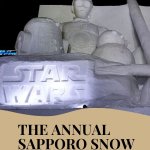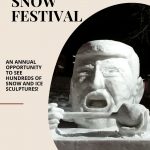Sapporo Snow Festival: A Winter Wonderland in Hokkaido, Japan
Sapporo is the capital of Hokkaido, Japan’s northern island, and is usually only visited by tourists who are passing through on their way to Niseko, one of the most popular ski resorts in the country. However, Sapporo itself has plenty to see and do, the most famous being the annual Sapporo Snow Festival, held for one week in early February each year.
Note: This is a guest post by Louis from Outdoor Explorer. He also supplied all of the photos.
Disclosure: This article includes affiliate links. If you click on one and make a purchase, I (Rachel) will receive a small commission. This will not affect your price.
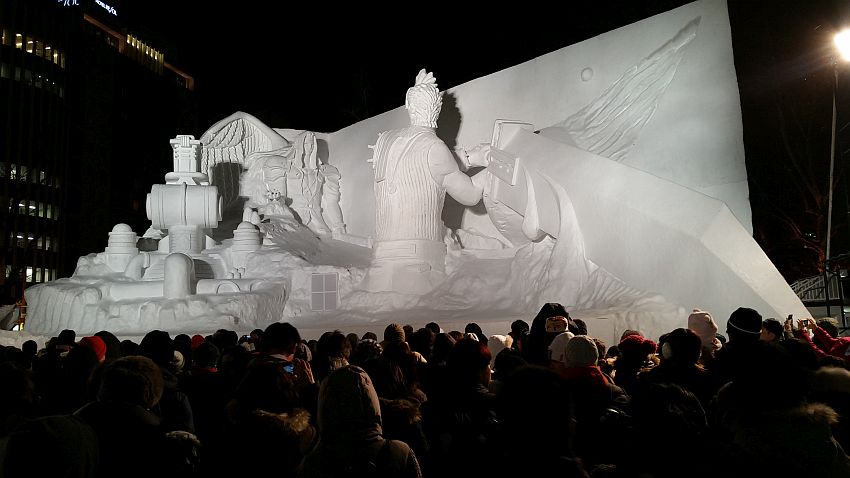
The snow festival started in 1950 and quickly became a big hit with the locals, drawing large crowds from the surrounding areas. From that year on, the snow festival has been held annually as a celebration of snow, ice and the skill of local artisans in sculpting these elements into impressive structures.
The festival itself consists of three main sites – the Odori site, the Susukino site and the Tsudome site.
Odori Site
Odori, meaning main street, is the primary attraction of the festival. This site is a 1.5-kilometre-long park that runs through the centre of town.
Visitors can walk along the length of this site and spot the huge snow sculptures that dot the strip.
This is nothing like the snowmen you might be used to making as a child – these are towering structures, often tens of metres high, each intricately detailed.
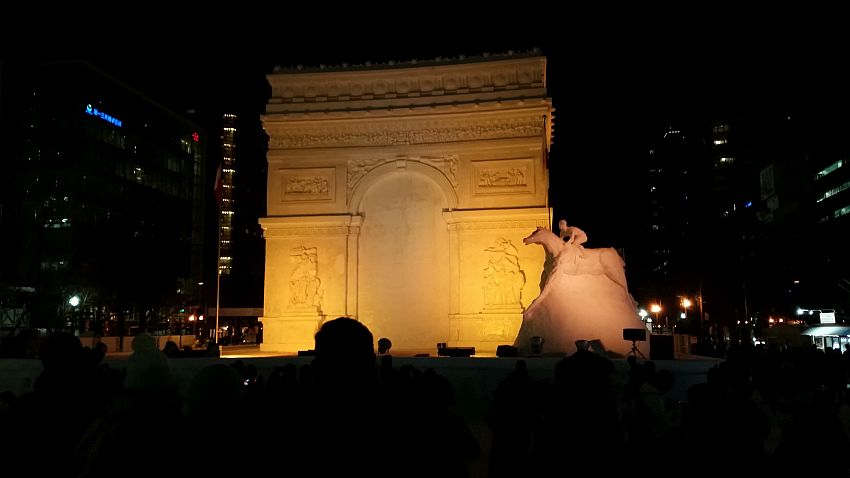
Each year, the content of the sculptures changes, but they are usually based on prominent events or people from the previous year. You can see some of the recent sculptures on the official website.
Alternatively, they are based on popular movie characters, such as those from the Star Wars series. The sculptures are lit up with colored lights, which makes it easier to see just how detailed these structures are.
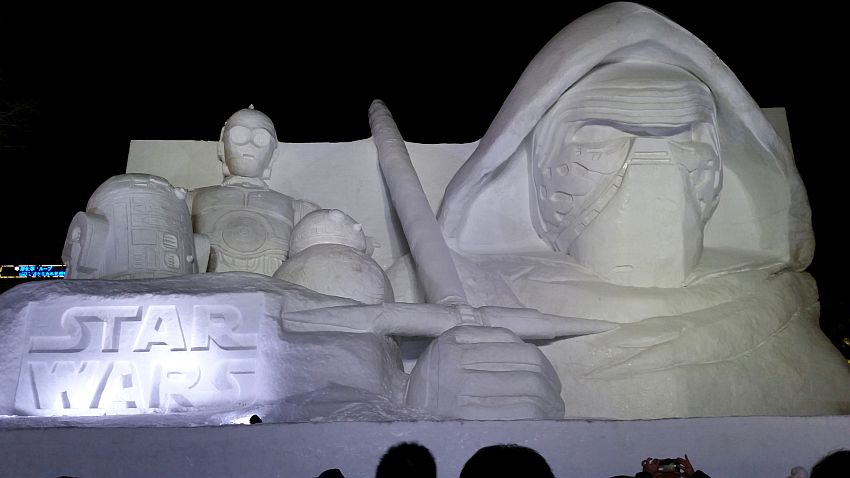
In addition to the sculptures, there are plenty of food and drink stalls around, where you can snack on some delicious Japanese food and warm up with a hot drink. Amazake is a sweet, hot drink made from rice, perfect for warming up on a cold night.
There are also some huge snow slides, where you can watch others come hurtling down the slopes.
There are typically around 300 snow sculptures on display at the Odori site in total. This site is very popular, so expect plenty of people and some human traffic jams in busy areas.

This area is also the site of the International Snow Sculpture Contest, where teams from nine countries compete to take first prize for the most impressive snow sculpture. In the lead-up to the competition, you can watch the teams craft their sculptures carefully using snow brooms and brushes. The participants are highly skilled and it is a pleasure to watch them in action.
You can get a great view over the entire Odori park area from the Sapporo TV tower, which has an observation deck. The tower costs around 700 yen for a single visit.
Sapporo Snow Festival’s Susukino Site
Not far from the Odori site is the Susukino site. Less focussed on snow, this site is all about ice sculptures, and there are usually over 100 to see here.
The ice sculptures are not as large as the snow ones at Odori, but they are still very impressive and lit up every day until 11pm.
The sculptures here are made of clear, unblemished ice, which gives them an almost glass-like appearance. There are sculptures of dragons, horses, angels and much more.
You can even take a break at the Ice Bar, and get a nice warm drink.
Make sure that you wear decent shoes here, as the road can be quite slippery thanks to the abundance of ice that repeatedly thaws and refreezes.
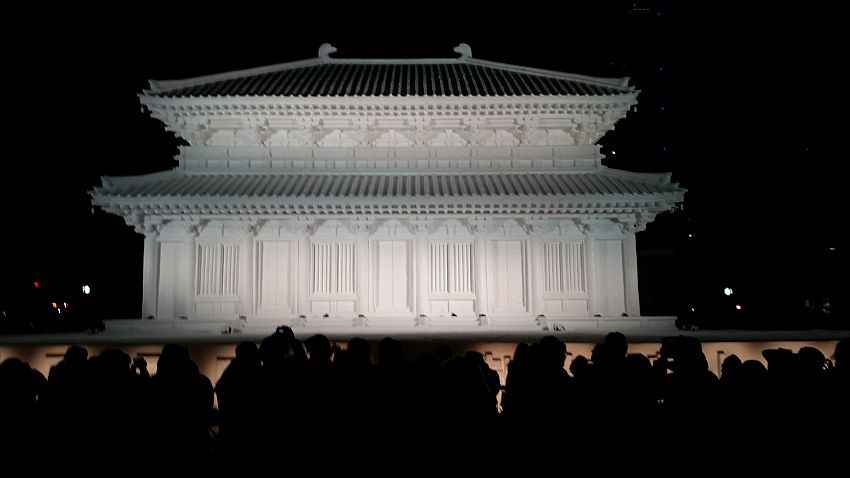
Tsudome Site
The Tsudome site is a little far away from the other two, yet still accessible via a ten-minute shuttle bus for just 100 yen.
It doesn’t have any sculptures and is instead a park full of slopes and ramps for tube sliding and tobogganing. There are also tunnel slides, an ice-glass-making experience and even snow park golf! This area is all about having fun, and it’s great for the whole family.
Make sure that you wear snow-appropriate gear here, preferably a ski jacket and pants.
Here are some other articles about Japan that you might enjoy:
Things To Know before visiting Sapporo Snow Festival
Clothes
The temperature in Sapporo during the snow festival barely gets above 0 degrees Celsius each day. It is very cold, especially for those who are from warmer countries and aren’t used to it.
Make sure that you layer plenty of warm clothes, including thermals, a beanie and gloves. There will be snow and ice on the footpaths, so make sure that you wear shoes with decent grip to avoid slipping and falling.
Cost
The snow festival itself doesn’t cost anything. You can enter freely and enjoy the sculptures as much as you like.
However, the festival is very, very popular, so the hotels in Sapporo tend to book out very early for this period. I highly recommend that you book at least six months ahead of the festival (so before August the previous year) to have a chance of securing a hotel.
The hotels are aware that this is a busy time, so they tend to crank up the prices for this week unfortunately. Expect to pay a fair bit more than you would normally.
Use the map below to book your accommodations:
Otaru
If the Sapporo snow festival isn’t enough for you, you can visit nearby Otaru by train and enjoy their snow festival. It runs at the same time and is much smaller than Sapporo’s but it’s also worth a visit if you have the time.
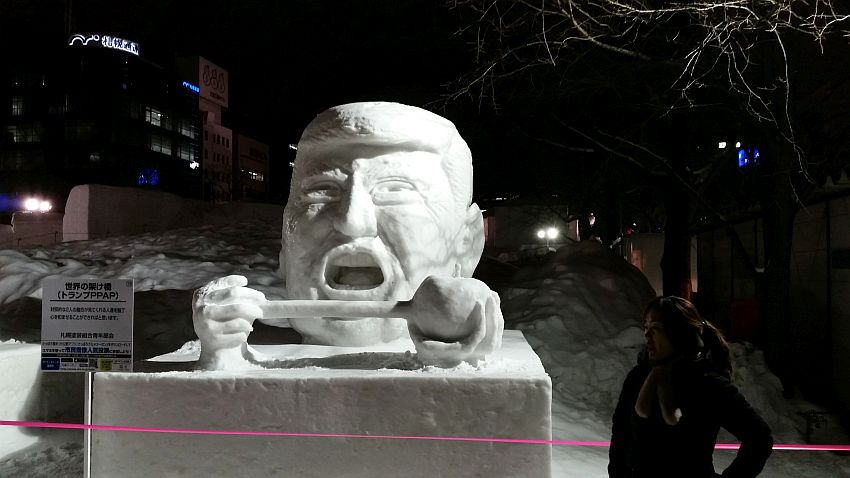
Summing Up
The annual Sapporo Snow Festival is an incredible sight where you can see stunning creations by some of the world’s best artisans of snow and ice.
Located right in the capital of Hokkaido, it’s also a great excuse to go and see Japan’s beautiful north island. Just make sure that you book your hotel well in advance to avoid missing out!
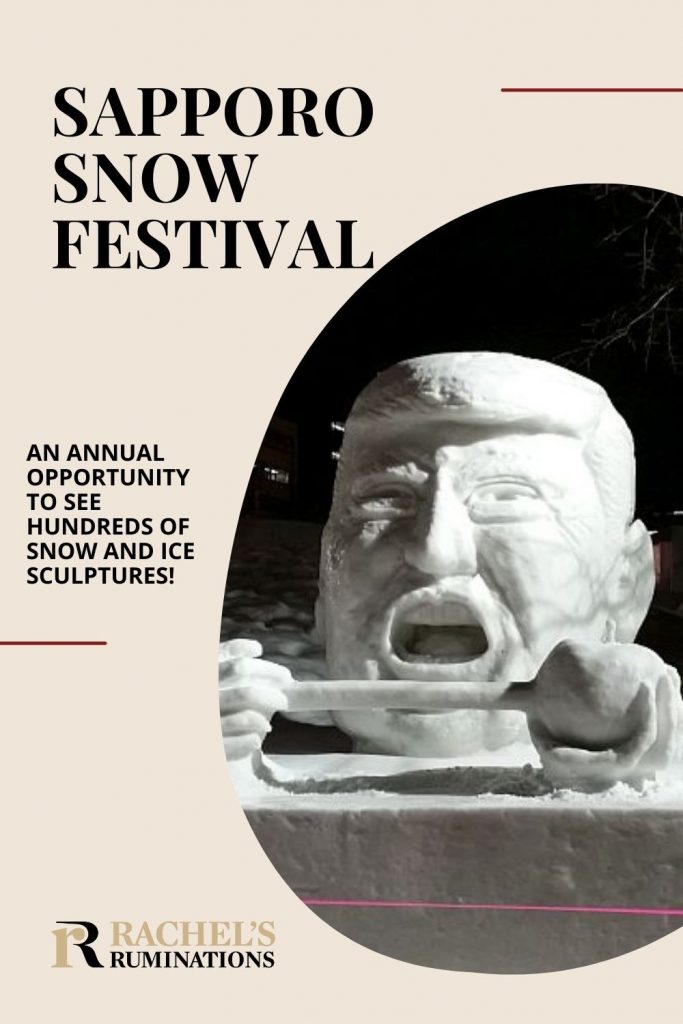
My travel recommendations
Planning travel
- Skyscanner is where I always start my flight searches.
- Booking.com is the company I use most for finding accommodations. If you prefer, Expedia offers more or less the same.
- Discover Cars offers an easy way to compare prices from all of the major car-rental companies in one place.
- Use Viator or GetYourGuide to find walking tours, day tours, airport pickups, city cards, tickets and whatever else you need at your destination.
- Bookmundi is great when you’re looking for a longer tour of a few days to a few weeks, private or with a group, pretty much anywhere in the world. Lots of different tour companies list their tours here, so you can comparison shop.
- GetTransfer is the place to book your airport-to-hotel transfers (and vice-versa). It’s so reassuring to have this all set up and paid for ahead of time, rather than having to make decisions after a long, tiring flight!
- Buy a GoCity Pass when you’re planning to do a lot of sightseeing on a city trip. It can save you a lot on admissions to museums and other attractions in big cities like New York and Amsterdam.
Other travel-related items
- It’s really awkward to have to rely on WIFI when you travel overseas. I’ve tried several e-sim cards, and GigSky’s e-sim was the one that was easiest to activate and use. You buy it through their app and activate it when you need it. Use the code RACHEL10 to get a 10% discount!
- Another option I just recently tried for the first time is a portable wifi modem by WifiCandy. It supports up to 8 devices and you just carry it along in your pocket or bag! If you’re traveling with a family or group, it might end up cheaper to use than an e-sim. Use the code RACHELSRUMINATIONS for a 10% discount.
- I’m a fan of SCOTTeVEST’s jackets and vests because when I wear one, I don’t have to carry a handbag. I feel like all my stuff is safer when I travel because it’s in inside pockets close to my body.
- I use ExpressVPN on my phone and laptop when I travel. It keeps me safe from hackers when I use public or hotel wifi.


